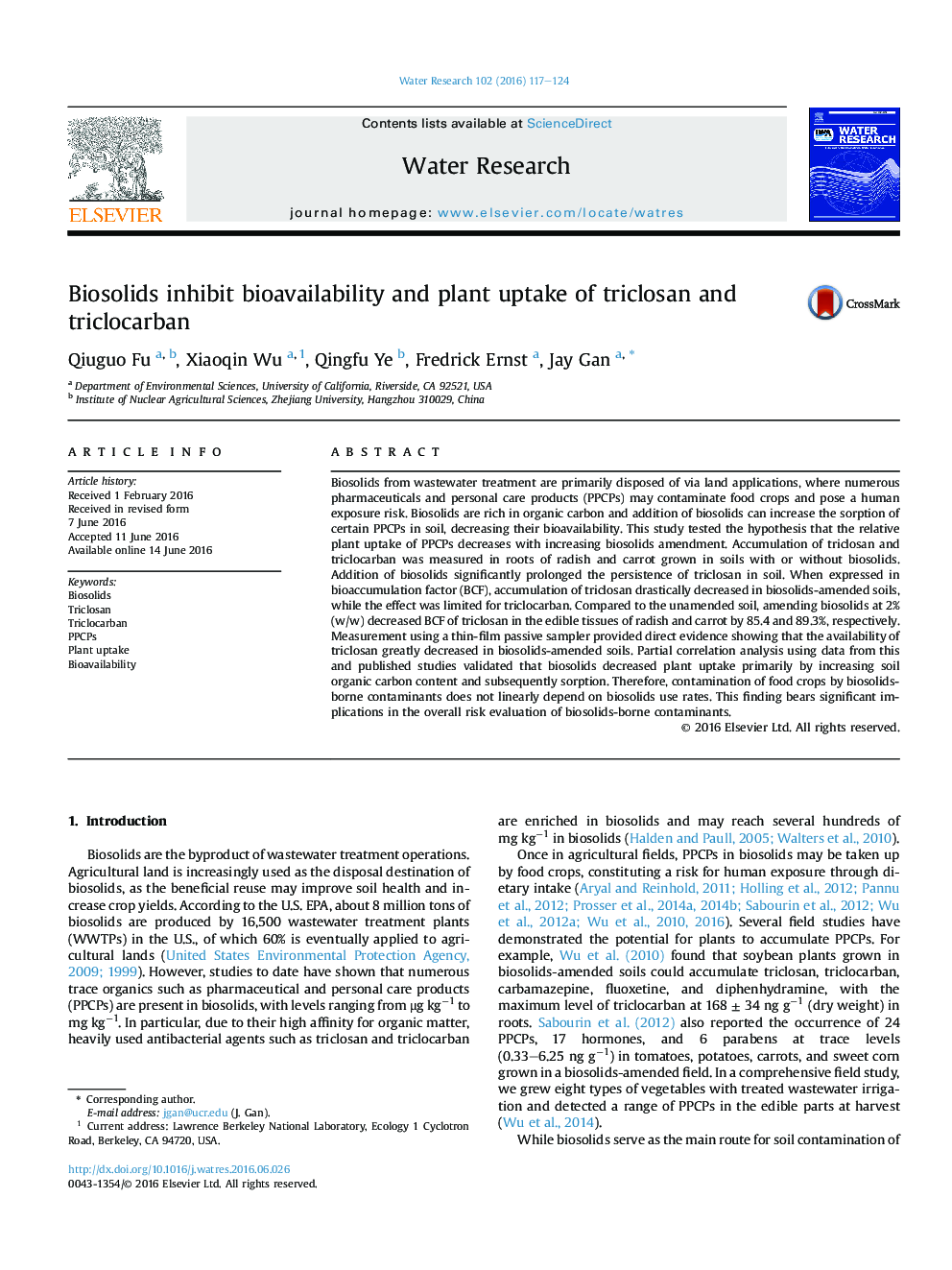| کد مقاله | کد نشریه | سال انتشار | مقاله انگلیسی | نسخه تمام متن |
|---|---|---|---|---|
| 4480845 | 1623066 | 2016 | 8 صفحه PDF | دانلود رایگان |
• Systematic experiments to evaluate plant uptake of triclosan and triclocarban before and after biosolid amendment.
• Comprehensive statistical analysis of results from this study and all relevant literature to discern biosolids effects.
• Use of a thin-film passive sampler to provide direct evidence on reduced bioavailability from biosolids amendment.
• Establishment of inhibition in plant uptake of triclosan and triclocarban by biosolids.
Biosolids from wastewater treatment are primarily disposed of via land applications, where numerous pharmaceuticals and personal care products (PPCPs) may contaminate food crops and pose a human exposure risk. Biosolids are rich in organic carbon and addition of biosolids can increase the sorption of certain PPCPs in soil, decreasing their bioavailability. This study tested the hypothesis that the relative plant uptake of PPCPs decreases with increasing biosolids amendment. Accumulation of triclosan and triclocarban was measured in roots of radish and carrot grown in soils with or without biosolids. Addition of biosolids significantly prolonged the persistence of triclosan in soil. When expressed in bioaccumulation factor (BCF), accumulation of triclosan drastically decreased in biosolids-amended soils, while the effect was limited for triclocarban. Compared to the unamended soil, amending biosolids at 2% (w/w) decreased BCF of triclosan in the edible tissues of radish and carrot by 85.4 and 89.3%, respectively. Measurement using a thin-film passive sampler provided direct evidence showing that the availability of triclosan greatly decreased in biosolids-amended soils. Partial correlation analysis using data from this and published studies validated that biosolids decreased plant uptake primarily by increasing soil organic carbon content and subsequently sorption. Therefore, contamination of food crops by biosolids-borne contaminants does not linearly depend on biosolids use rates. This finding bears significant implications in the overall risk evaluation of biosolids-borne contaminants.
Figure optionsDownload high-quality image (204 K)Download as PowerPoint slide
Journal: Water Research - Volume 102, 1 October 2016, Pages 117–124
